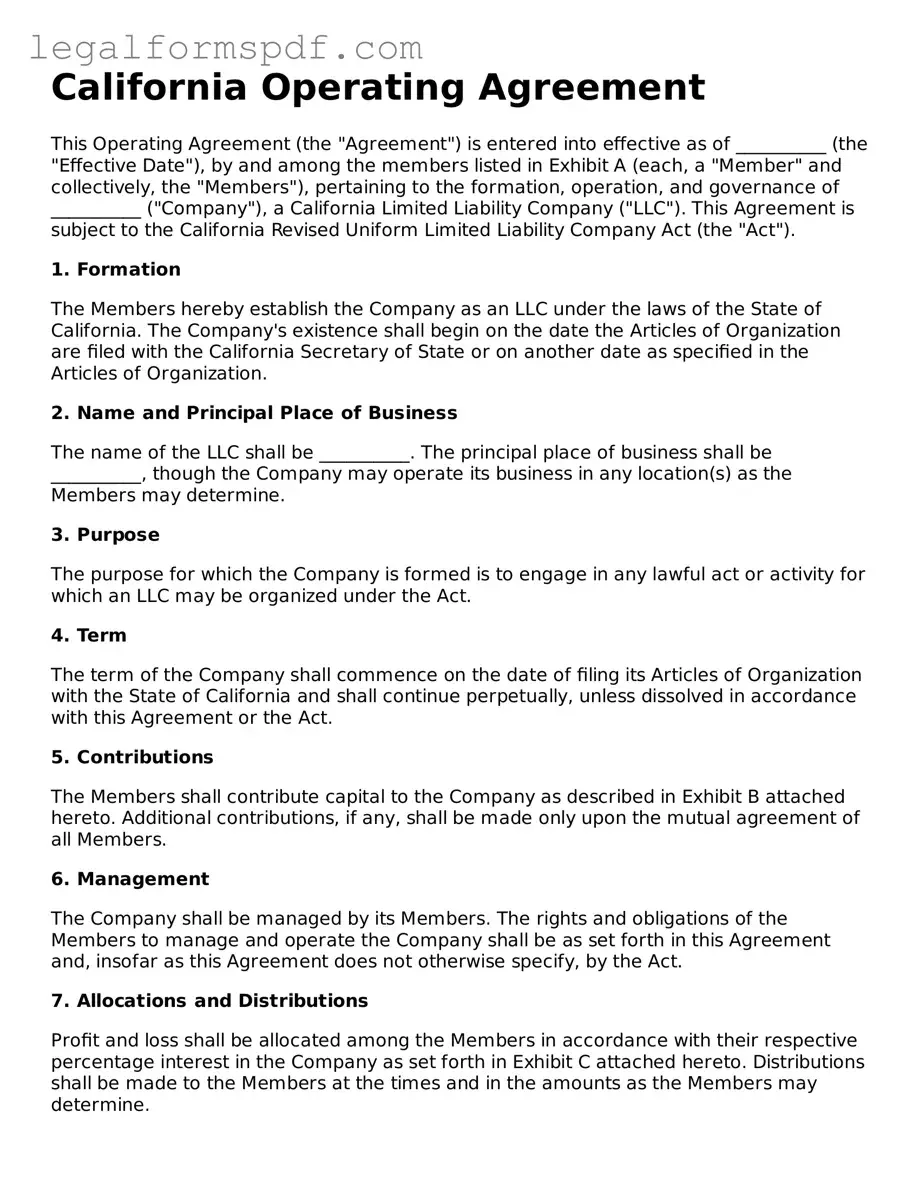California Operating Agreement
This Operating Agreement (the "Agreement") is entered into effective as of __________ (the "Effective Date"), by and among the members listed in Exhibit A (each, a "Member" and collectively, the "Members"), pertaining to the formation, operation, and governance of __________ ("Company"), a California Limited Liability Company ("LLC"). This Agreement is subject to the California Revised Uniform Limited Liability Company Act (the "Act").
1. Formation
The Members hereby establish the Company as an LLC under the laws of the State of California. The Company's existence shall begin on the date the Articles of Organization are filed with the California Secretary of State or on another date as specified in the Articles of Organization.
2. Name and Principal Place of Business
The name of the LLC shall be __________. The principal place of business shall be __________, though the Company may operate its business in any location(s) as the Members may determine.
3. Purpose
The purpose for which the Company is formed is to engage in any lawful act or activity for which an LLC may be organized under the Act.
4. Term
The term of the Company shall commence on the date of filing its Articles of Organization with the State of California and shall continue perpetually, unless dissolved in accordance with this Agreement or the Act.
5. Contributions
The Members shall contribute capital to the Company as described in Exhibit B attached hereto. Additional contributions, if any, shall be made only upon the mutual agreement of all Members.
6. Management
The Company shall be managed by its Members. The rights and obligations of the Members to manage and operate the Company shall be as set forth in this Agreement and, insofar as this Agreement does not otherwise specify, by the Act.
7. Allocations and Distributions
Profit and loss shall be allocated among the Members in accordance with their respective percentage interest in the Company as set forth in Exhibit C attached hereto. Distributions shall be made to the Members at the times and in the amounts as the Members may determine.
8. Changes to the Agreement
Any changes to this Agreement must be in writing and signed by all Members. Only written amendments that are signed by each Member can modify, add, or waive any provision of this Agreement.
9. Dissolution
The Company may be dissolved with the consent of Members holding more than fifty percent (50%) of the then-current percentage interest in the Company. Upon dissolution, the Company shall be wound up in accordance with the Act.
IN WITNESS WHEREOF, the Members have executed this Operating Agreement as of the Effective Date.
Exhibit A: Members
Member Names and Percentage Interest:
- Name: __________, Percentage Interest: __________%
- Name: __________, Percentage Interest: __________%
Exhibit B: Initial Contributions
Detail of Initial Capital Contributions by Each Member:
- Member Name: __________, Contribution: $__________
- Member Name: __________, Contribution: $__________
Exhibit C: Profit and Loss Allocation
Allocation of Profit and Loss among the Members:
- Member Name: __________, Allocation: __________%
- Member Name: __________, Allocation: __________%
